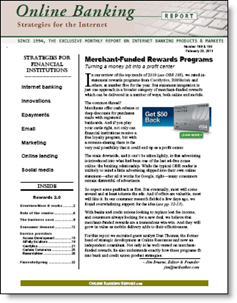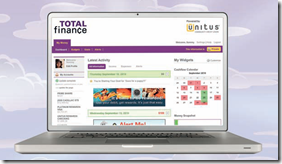 It figures. As soon as I write a report complaining about the dearth of online fee-based services, a major bank launches one, practically the same day.
It figures. As soon as I write a report complaining about the dearth of online fee-based services, a major bank launches one, practically the same day.
Buffalo, NY-based M&T Bank just released an upgrade to its online banking system adding:
- Intuit’s FinanceWorks PFM
- Equifax-provided FICO score
Both are good moves, but it’s the credit score service that’s especially novel. It’s integrated directly into online banking, so customers needn’t log in to another site to view their score. And the bank is charging for it, to the tune of $2.99 per month.
___________________________________________________________________________________
Potential
__________________________________________________________________________________
It will be interesting to see how M&T promotes the new feature to its online banking base which numbers 700,000 to 800,000 (active monthly users) based on traffic estimates from Compete. I’m also curious to see whether the bank upsells pricier, full-featured credit monitoring and/or credit reports to the $2.99/mo base. (I’d be surprised if they don’t.)
There’s no mention of a free-trial period, but based on industry experience, that is likely to be one of the best marketing strategies available. Given all the misleading advertising in the market (“free” credit scores that cost $15/mo), I’m pleased to see that M&T is upfront about the cost, mentioning it within the first 50 words of the landing page.
With an aggressive promotional campaign, it seems possible the bank could eventually get 10% to 15% of its online base using it. Then M&T gets a dual benefit: a unique and powerful tool for its customers and $3.5 million in incremental gross revenues (if it hits 100,000 users). The bank can also upsell credit monitoring, credit scores for other family members, along with balance transfers and other credit products.
———————————
M&T Bank landing page for new integrated credit score (link; 6 Jun 2011)
Note: Pricing disclosed upfront (yellow highlighting is ours)
Note:
1. See our current Online Banking Report, Creating Fee-Based Online & Mobile Banking Services.
























